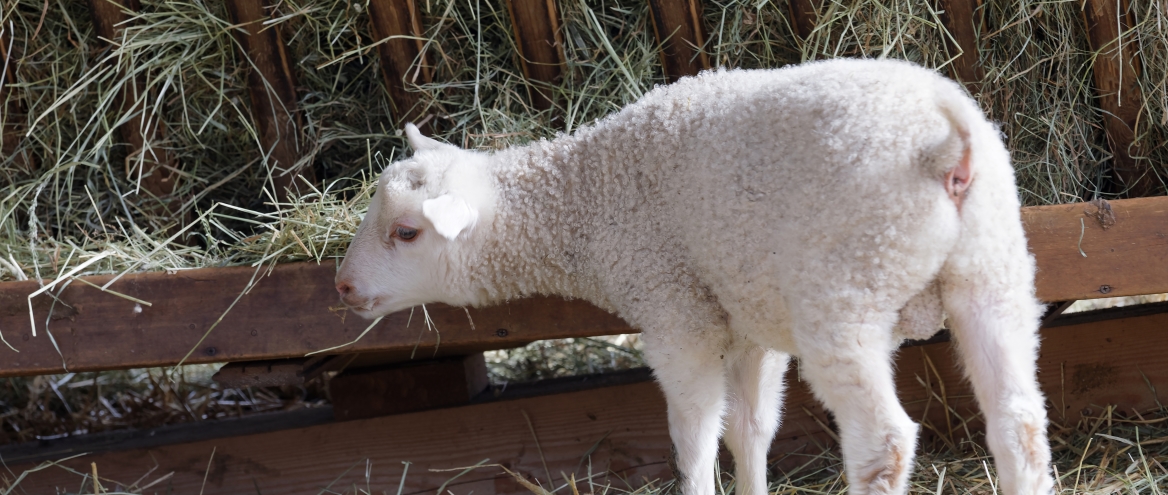Feeding roughage to young lambs
Preparing lambs for weaning is a crucial process to reduce the risk of a growth check at this critical stage and to ensure lambs continue to thrive. As such, it is important to ensure all lambs have access to clean, fresh water; high quality concentrates and an adequate source of roughage alongside their milk supply. The type of roughage supplied can influence many factors, such as rumen development.

Should I feed my lambs hay or straw?
When lambs are reared away from the ewe on an ad-lib feeder, Volac does not recommend providing ad-lib access to hay. Good quality hay is highly palatable but has a low energy density, so the likely outcome will be that, similar to calves, lambs will consume significant quantities of hay and reduced quantities of starter feed and develop a classic ‘potbellied’ appearance. There is considerable rumen ‘fill’ but this does not help to achieve good functional rumen development, which is encouraged more by the consumption of high quality concentrate feeds.
By offering clean straw (which is less palatable) in racks, the need for long fibre can be satisfied without a significant detrimental effect on solid feed intake. Encouraging increased solid feed intake at an earlier stage stimulates earlier rumen development and reduces the risk of a significant growth check at weaning, this can also offer the opportunity to wean earlier than would be the case for lambs reared on the ewe.
In order for this to be successful, the lamb must be consuming at least 250g/day of solid feed. The management practice of offering high quality concentrates and straw in racks leads to higher early growth rates than that of feeding ad-lib hay and concentrates.
Straw is also a good abrasive fibre source, helping to improve papillae integrity.
Rumen development in lambs
1) Rumen papillae and epithelial development – which improve rumen ‘functionality’. Achieved through the consumption of good quality lamb creep feed (fermentation of concentrate/carbohydrates)
2) Increase in rumen volume – (by forage intake). NB: the increase in volume is not directly linked to ‘functionality’ of the rumen.
3) Papillae integrity - by diet abrasiveness/coarseness. The ingestion of coarse particles of feed (including straw) alongside more finely ground concentrate feeds, helps to prevent papillae clumping and excessive keratin (a wax secreted by rumen epithelium) accumulation on surface of rumen papillae – this, in turn, increases absorptive function.
Lambs at foot
Lambs which are still with the ewe are not typically weaned abruptly from the dam and frequently stay on the ewe for up to 8/9 weeks. This means that they are typically older at weaning than lambs reared away from the ewe and the functionality of the rumen would naturally have developed more in these older animals. This means that there is less pressure to develop a functional rumen in a short time frame, and therefore less of a requirement to limit access to hay.
From a practical perspective, it is also a challenge to restrict the lambs access to a quality roughage source as this should always be available to the ewes.
In all cases, once lambs are weaned they should have access to good quality hay, straw or grass – with any significant modification to the diet being managed carefully to avoid sudden changes to intake patterns.